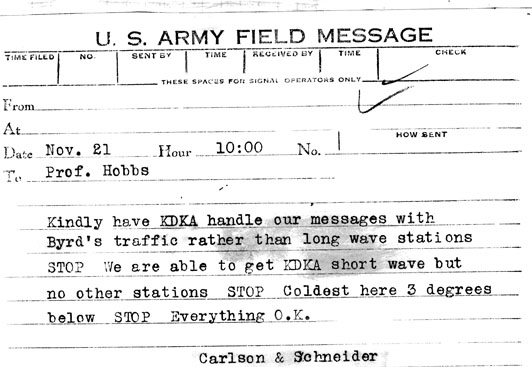The University of Michigan Amateur Radio Club was among the first college amateur radio clubs in the United States. The club's first call sign 8XA was issued in 1913 just a few years after the first trans-Atlantic radio communication and the invention of the vacuum tube.
From the club archives:
DE Richard French KD8APA
The University of Michigan Amateur Radio Club has been in the spotlight since the beginning of amateur radio. By 1913, only four years after the first amateur club was formed, the University club was given the call 8XA. One of the first college clubs in the US, three stick-to-it operators filled an entire logbook during the cold winter of 1915 vying with local amateurs for contacts, even listening to a steamer in distress 300 miles southeast of Newport. The May 7, 1915 log of 8XA includes the code copied from a news bulletin, Lusitania sunk by submarine. Log entries soon ceased as the United States entered the first World War and the Amateur Radio Service was suspended.
After World War 1 the club was issued 8AXZ. In 1927 activities heated up as the 1928 Byrd expedition set new standards for American explorers. As Byrd put it, "...this single department received more attention than any other, for our program called for the most elaborate system of communication ever proposed in a Continent where radio conditions are notoriously bad". Five radio engineers, 24 transmitters, 31 receivers and a main base at Little America were organized to support the two expedition ships. That year the club not only handled traffic for the Byrd expedition but also for another, this time on top of the world to Mount Evans, Greenland.

From the late 1920's, into the 1930's, traffic was handled from all corners of the globe. In 1931 M.K. Jessup from the Detroit Observatory contacted the Lamont Observatory in South Africa to set up frequencies and times for future QSOs. Col. S.R. Sanderson even wrote Senator Edge in Washington requesting aid in passage of the Personnel Bill in the Senate. In 1934, after repeated letters discussing the benefits and requirements of admission, the club joined the ARRL (it seems for the cheaper printed matter). Finally, in 1937, The Chair of the Student Affairs Committee judiciously recognized the University of Michigan Amateur Radio Club. Work continued at a fast pace in 1941 with Louis Hopkins' Design of a 20 meter Radiotelephone Transmitter as more logbooks filled with contacts from around the world. On January 31, 1947 the club was issued W8ZUP but was replaced with W8AXZ after a battle over callsigns with the FCC. Amateurs were active at Michigan all through the 50's, 60's and 70's, reconstituting in 1973, but often with transceivers for each dorm on campus.
In 1967, by special request of the FCC, for the University's sesquicentennial, the club was issued the callsign W8UM. By 1976 28 logbooks had been filled under the W8UM call. Today, logbooks continue to be filled under W8UM, a call worth at least 3 dB of gain, rekindling old school rivalries and appreciating the great history of the club.
It could be said that amateurs have operated out of nearly ever building at the University, from the early days in West Engineering and meetings in Natural Science, East Physics and the Michigan Union, to later years in South and West Quads and other dorms, to today's shack in EECS.
As the tower rises and a new chapter of UM-ARC history begins we wonder how many new buildings will find place in the legacy of Amateur Radio at the University of Michigan.
(Taken from the 2004-05 Chirp and Splatter)